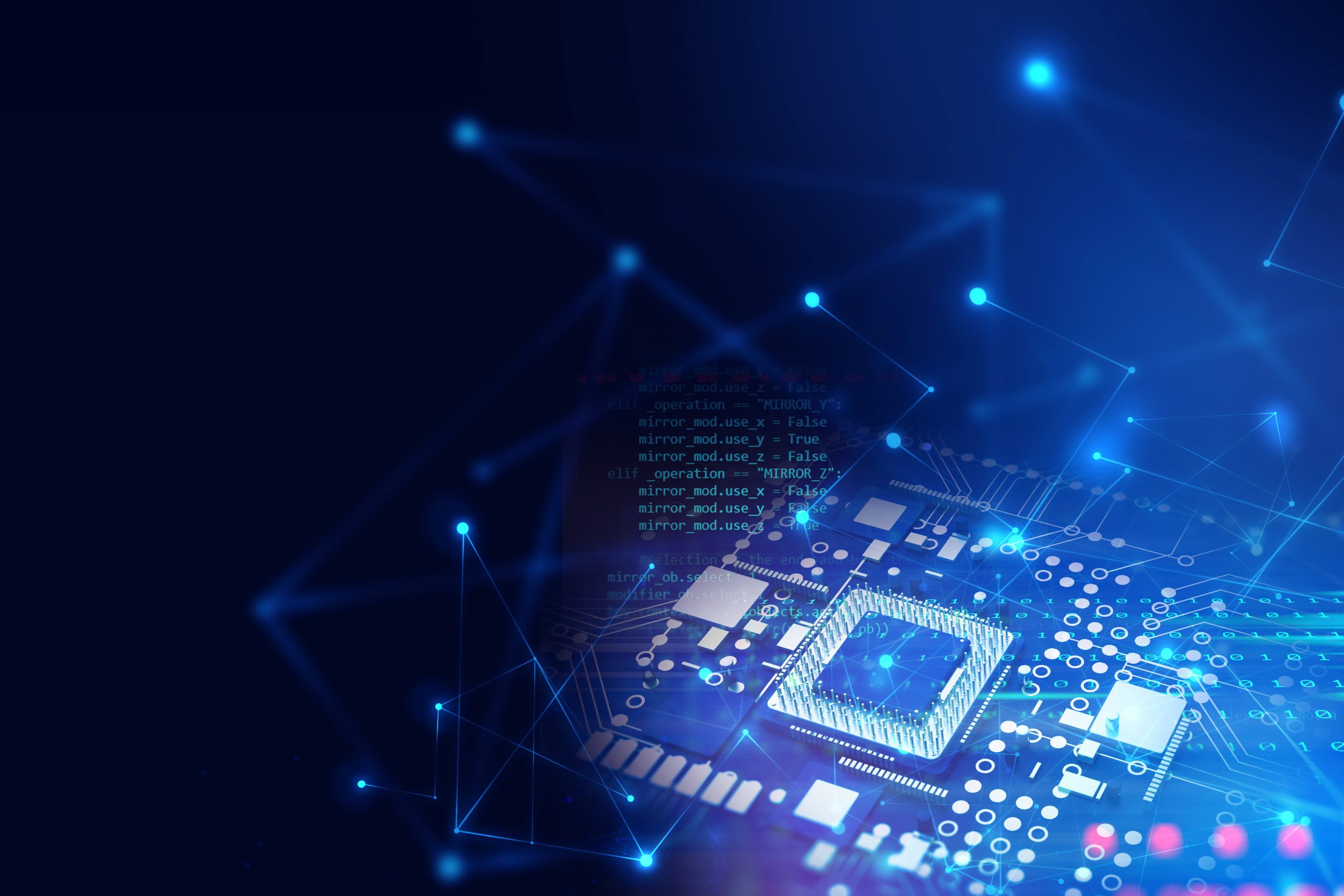A Field Programmable Gate Array (FPGA) is an integrated circuit that can be configured and customized after manufacturing. These chips are called “field-programmable” because of this ability. They consist of programmable logic blocks that can be set up to carry out a wide range of functions or act as logic gates, providing the user with great flexibility in how the circuit operates.
Field-programmable gate arrays (FPGAs) are semiconductor devices made up of configurable logic blocks (CLBs) and programmable interconnects. These blocks can perform simple to complex operations and can include memory components such as flip-flops or memory blocks.
FPGAs are similar to programmable read-only memory chips but can accommodate more gates and are reprogrammable, unlike ASICs, which are designed for specific tasks. They can be used to customize microprocessors for particular uses and are popular in various industries, including wireless communications, data centers, automotive, medical, and aerospace. The reprogrammable nature of FPGAs allows for flexibility and design updates as needed.
Applications of FPGAs
FPGAs are utilized in various industries and have diverse areas of implementation. Some of their primary areas of use include.
Energy Industry
FPGAs can play an important role in smart power grid technology by improving performance and scalability while keeping power consumption low. This is particularly useful in transmission and distribution (T&D) substations where efficient power networks are needed for optimal operation.
Improved automotive experiences
Microsemi FPGAs allow original equipment manufacturers (OEMs) and suppliers to create new safety applications for vehicles, such as cruise control, blind spot warning, and collision avoidance. These FPGAs also provide cybersecurity features like information assurance, anti-tampering, hardware security, and dependability features like error-corrected memory and low static power.
Aerospace and defense
Industrial manufacturing companies provide rad-hard and rad-tolerant FPGAs, which are often space-grade, to meet the performance, reliability, and lifespan requirements of harsh environments. These FPGAs offer greater flexibility than traditional ASIC implementations and are particularly suitable for processing-intensive space systems.
Computer Vision systems
In today’s world, computer vision systems are prevalent in various gadgets such as video surveillance cameras, robots, and other devices. It is often necessary to use an FPGA-based system to enable these gadgets to interact with people appropriately based on their position, surroundings, and facial recognition capabilities.
Data centers
The Internet of Things and big data are resulting in a tremendous increase in the amount of data being acquired and processed. The use of deep learning techniques for parallel computation drives the need for low-latency, flexible, and secure computational capacity. Due to rising space costs, adding more servers cannot meet this demand. FPGAs are gaining acceptance in data centers due to their ability to accelerate processing, flexibility in design, and hardware-based security against software vulnerabilities.
Real-time systems
FPGAs are used in real-time systems where response time is critical, as conventional CPUs have unpredictable response times, making it difficult to predict when a trigger will fire accurately.
Designing ASICs
Creating the circuit’s architecture is the first step, and then a prototype is constructed and tested using an FPGA, allowing errors to be corrected. Once the prototype performs as expected, an ASIC project is developed. This approach saves time, as creating an integrated circuit can be laborious and complex.
FPGA-based Acceleration as a Service
FPGA-based systems can perform complex tasks and process data more quickly than their virtual counterparts. While not everyone may be able to reprogram an FPGA for a specific task, cloud services are making FPGA-based data processing more accessible to customers. Some cloud providers are even offering a new service called Acceleration as a Service (AaaS), which allows customers to access FPGA accelerators.
With AaaS, one can utilize FPGAs to speed up various types of workloads, such as:
- Training machine learning models
- Handling big data
- Analyzing video streaming
- Conducting financial computations
- Enhancing databases
Some FPGA manufacturers are already working on creating cloud-based FPGAs for AI workload acceleration and other applications requiring high computing power. For example, Intel is powering the Alibaba Cloud AaaS service known as f1 instances. The Acceleration Stack for Intel Xeon CPU with FPGAs, also available to Alibaba Cloud users, offers two popular software development flows, RTL and OpenCL.
Another major company in the industry, Microsoft, is also competing to build an efficient AI platform. Their project, Brainwave, offers FPGA technology to accelerate deep neural network inferencing. Like Alibaba Cloud, they also use Intel’s Stratix 10 FPGA.
FPGA vs. GPU for Deep Learning/Artificial Intelligence
GPUs excel in parallel processing by performing many arithmetic operations simultaneously, providing significant acceleration in situations where the same workload must be performed in quick succession. However, running AI on GPUs has its limitations. GPUs do not provide the same level of performance as ASICs, which are chips specifically designed for a particular deep-learning workload.
On the other hand, FPGAs offer hardware customization with integrated AI capabilities and can be programmed to mimic the behavior of a GPU or an ASIC. Their reprogrammable and reconfigurable nature makes them suitable for the rapidly changing AI landscape, allowing for quick testing of algorithms and faster time to market. FPGAs offer numerous advantages for deep learning applications and other AI workloads:
- Low latency: As compared to a standard GPU, an FPGA has a larger memory bandwidth which allows it to process large volumes of data.
- Excellent value and cost-effectiveness: FPGAs can be reprogrammed for different functionalities, making them one of the most cost-effective hardware options. Designers can save cost and board space by integrating additional capabilities onto the same chip.
- Low power consumption: With FPGAs, hardwares can be fine-tuned to the application, helping to meet power efficiency requirements.
- Parallelism: One can use an FPGA’s portion for a function rather than the entire chip, which allows it to host multiple functions in parallel.
- Integrating AI into workloads: Using FPGAs, AI capabilities like deep packet inspection or financial fraud detection can be added to existing workloads.
- Providing acceleration for high-performance computing (HPC) clusters: FPGAs can facilitate the convergence of AI and HPC by serving as programmable accelerators for inference.
Disadvantages of using FPGAs
- Programming: While FPGAs offer a high degree of flexibility, they can be difficult to reprogram, and there is a need for more experienced programmers in the market.
- Implementation complexity: While the potential for using FPGAs to accelerate deep learning is promising, only a few companies have attempted to implement it. For many AI solution developers, the more traditional combination of GPUs and CPUs is a more manageable option.
- Cost: The difficulty of reprogramming the circuit and the shortage of experienced programmers in the market make using an FPGA for accelerating AI-based applications a costly solution. The expense of multiple reprogramming of a circuit can be quite high for small-scale projects.
- Lack of libraries: A limited number of ML libraries support FPGAs out of the box.
Also, don’t forget to join our Reddit Page, Discord Channel, and Email Newsletter, where we share the latest AI research news, cool AI projects, and more.
I am a Civil Engineering Graduate (2022) from Jamia Millia Islamia, New Delhi, and I have a keen interest in Data Science, especially Neural Networks and their application in various areas.









